A Journey Through Sri Lanka’s Colonial Past
Galle, a historic coastal city in southern Sri Lanka, is one of the country’s most iconic destinations. Known for its well-preserved colonial architecture, rich history, and charming atmosphere, Galle offers visitors a unique opportunity to step back in time and explore the cultural influences left by the Portuguese, Dutch, and British during their rule. At the heart of this vibrant city lies the Galle Fort, a UNESCO World Heritage Site that stands as a testament to Sri Lanka’s colonial past. This guide takes you through the key attractions and experiences that make Galle a must-visit destination for history lovers and travelers alike.
A Brief History of Galle
Portuguese Era (1505-1640)
Galle first came under European control in 1505 when the Portuguese arrived on the island. They quickly recognized the strategic importance of Galle’s natural harbor and established a small fort to protect their trade interests. The Portuguese influence is still visible today in the fort’s layout and some of the early churches.
.jpg)
Dutch Era (1640-1796)
In 1640, the Dutch East India Company (VOC) captured Galle from the Portuguese and expanded the fort, transforming it into the impressive structure that remains today. The Dutch built extensive fortifications, including thick ramparts, bastions, and an intricate street grid. They also established key institutions, such as the Dutch Reformed Church, and left a lasting architectural legacy that defines Galle’s character.
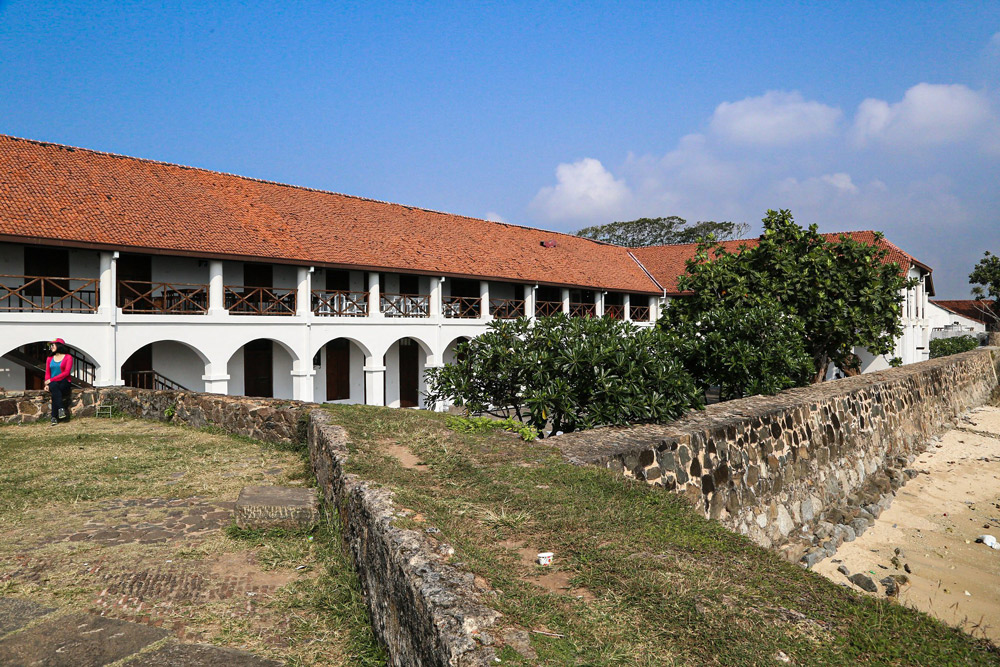
British Era (1796-1948)
When the British took control of Sri Lanka in 1796, Galle remained a vital administrative and commercial center. While the British made some modifications to the fort, including the addition of new buildings and roads, they preserved much of the Dutch architecture. Galle continued to thrive as a major port until the rise of Colombo in the late 19th century.
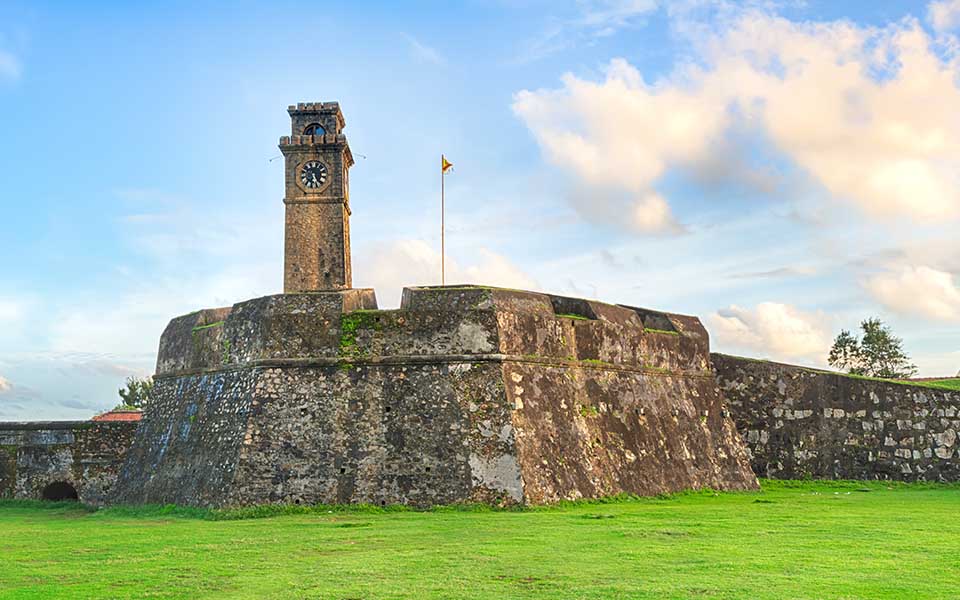
Exploring Galle Fort: A UNESCO World Heritage Site
Galle Fort, the crown jewel of Galle, is a living, breathing historical site that has been continuously inhabited for centuries. Walking through its cobbled streets and colonial-era buildings offers an immersive experience of Sri Lanka’s past. Here are the key attractions within the fort:
1. Galle Lighthouse
Location: Southern end of Galle Fort
Built: 1939 (replacing the original 1848 lighthouse)
Overview:
The Galle Lighthouse, standing proudly on the ramparts, is one of the most photographed landmarks in Galle. This fully operational lighthouse offers sweeping views of the Indian Ocean and is a great spot for sunset watching. The nearby palm trees and coastal breeze add to the charm of this iconic structure.
What to Do:
- Stroll along the ramparts and enjoy panoramic views of the sea.
- Visit in the early morning or late afternoon for the best photo opportunities.
.jpg)
2. Dutch Reformed Church (Groote Kerk)
Location: Church Street, Galle Fort
Built: 1755
Overview:
The Dutch Reformed Church is one of the oldest Protestant churches in Sri Lanka, built by the Dutch in 1755. Its simple yet elegant design reflects Dutch colonial architecture, and the interior features beautiful wooden pews, a pulpit, and tombstones embedded in the floor. The church’s serene atmosphere offers a glimpse into the spiritual life of the Dutch settlers.
What to Do:
- Explore the interior of the church, noting the brass plaque and gravestones that tell the stories of Dutch families who lived in Galle.
- Visit the nearby graveyard for a more in-depth look at the colonial history of Galle.
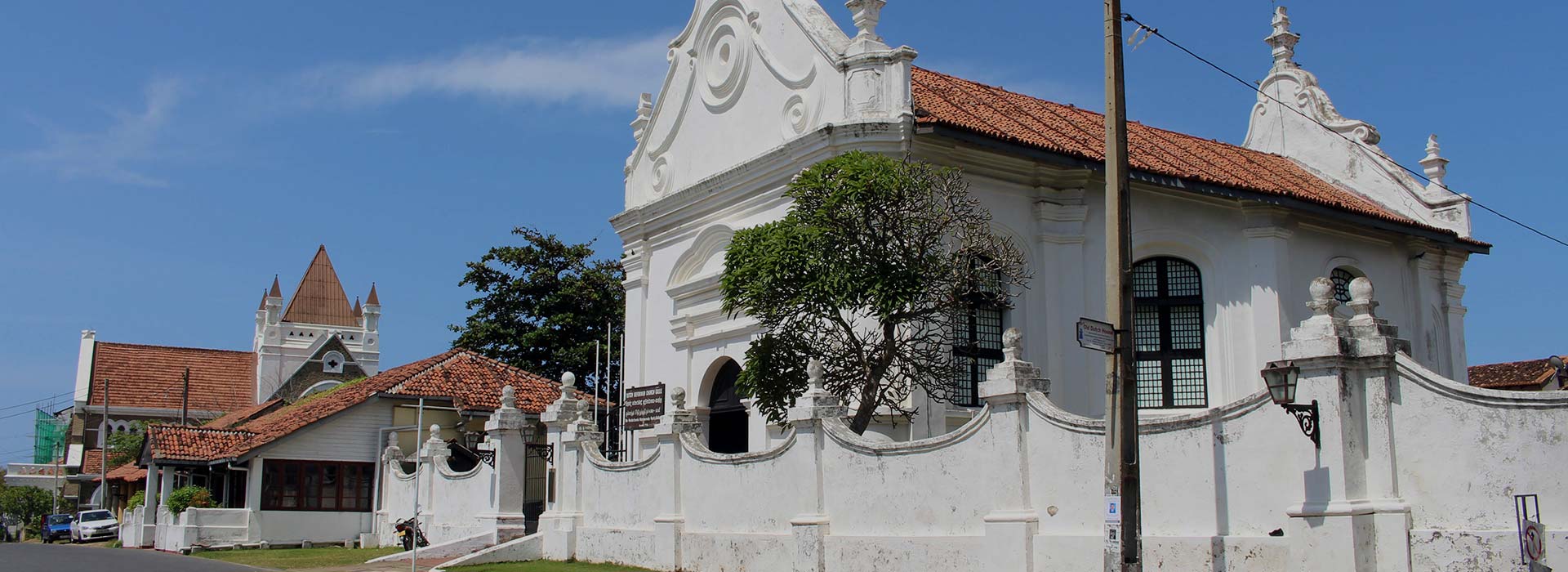
3. Galle Fort Ramparts
Location: Surrounding the fort
Overview:
The Galle Fort Ramparts encircle the entire fort, providing an ideal vantage point for walking tours. These sturdy walls, originally built by the Portuguese and expanded by the Dutch, have protected the city from both military invasions and natural disasters, including the 2004 tsunami. Walking along the ramparts is a must-do activity, offering stunning views of the ocean and the fort’s interior.
What to Do:
- Walk along the ramparts at sunset for breathtaking views of the Indian Ocean and the fort’s skyline.
- Explore the various bastions along the ramparts, such as the Star Bastion, Moon Bastion, and Sun Bastion, each with its historical significance.
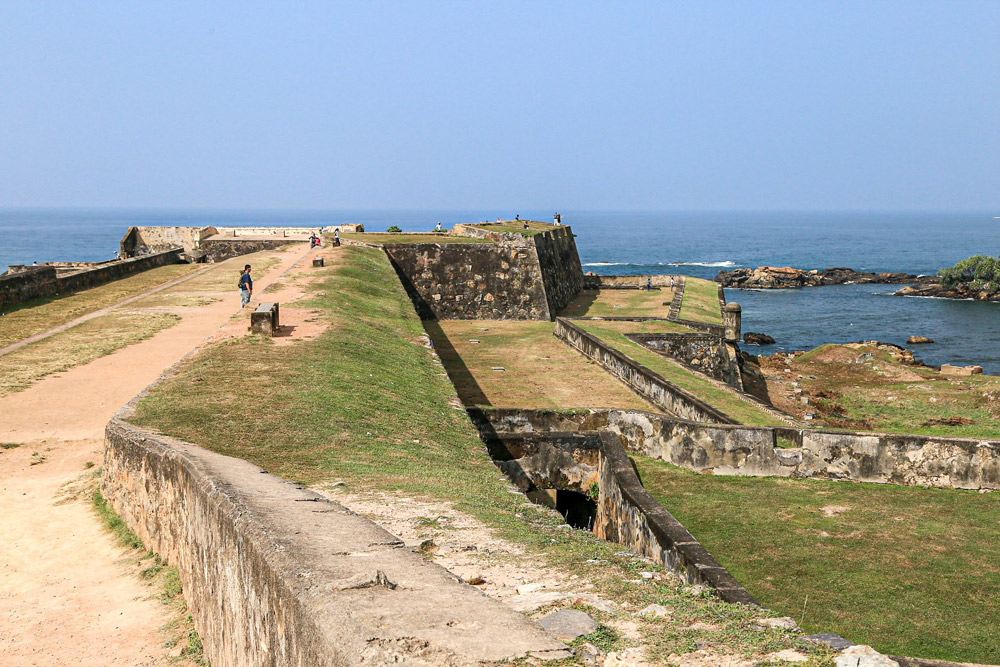
4. National Maritime Museum
Location: Queen Street, Galle Fort
Established: 1992
Overview:
Housed in a Dutch warehouse built in the 17th century, the National Maritime Museum offers insights into Sri Lanka’s rich maritime history. The museum features exhibits on ancient seafaring, maritime trade routes, and the role of Galle as a major port in the Indian Ocean. You’ll also find artifacts recovered from shipwrecks, showcasing the importance of Galle during the colonial period.
What to Do:
- Explore exhibits that highlight the history of Galle’s harbor and its strategic significance during the colonial era.
- Learn about marine life, fishing traditions, and shipwrecks through engaging displays and models.
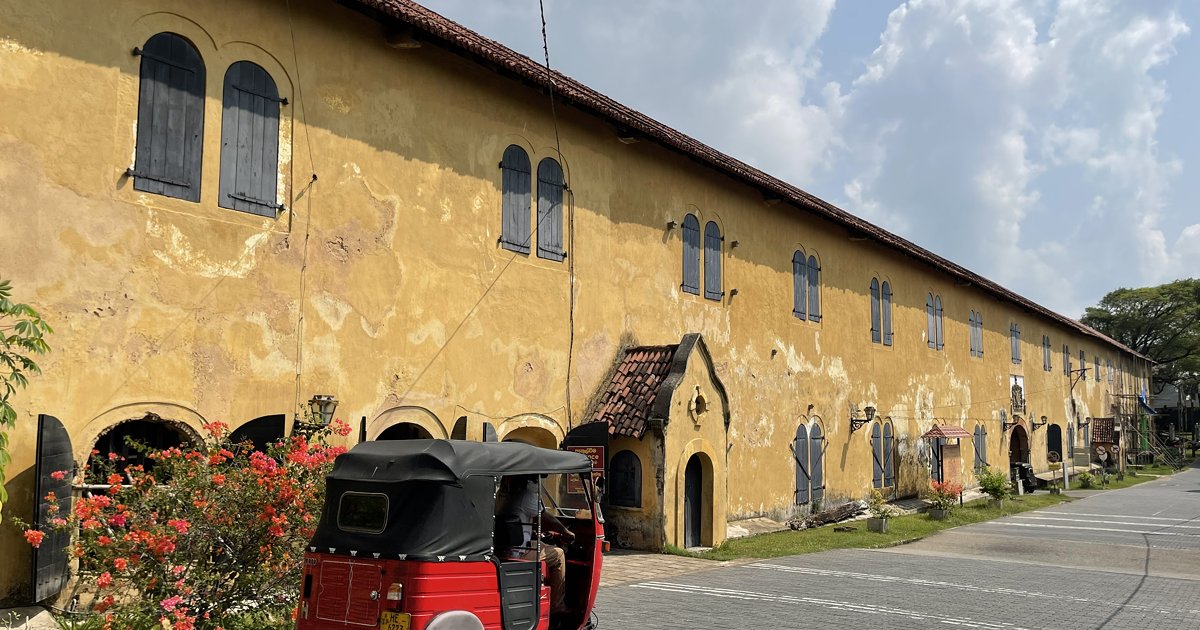
5. Old Dutch Hospital
Location: Hospital Street, Galle Fort
Built: 18th century
Overview:
The Old Dutch Hospital is one of the oldest buildings in Galle Fort, dating back to the 18th century. This beautifully restored building now houses upscale restaurants, cafes, and boutiques, making it a great place to relax and enjoy the fort’s atmosphere after a day of exploring.
What to Do:
- Enjoy a meal or coffee at one of the many restaurants offering views of the ocean.
- Browse the boutique shops selling handmade crafts, jewelry, and local products.
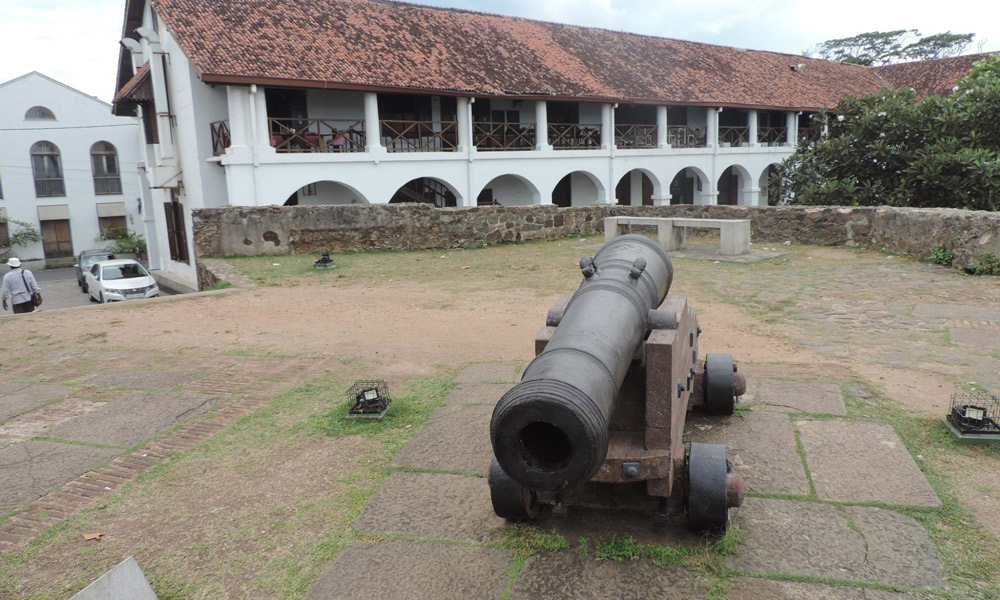
6. Historical Mansion Museum
Location: Leyn Baan Street, Galle Fort
Overview:
The Historical Mansion Museum is a private collection of antiques and artifacts from the colonial era. Housed in a Dutch colonial building, the museum offers visitors a glimpse into Galle’s past through its extensive collection of items, including vintage jewelry, coins, pottery, and colonial-era tools. The museum also has a working gem workshop, where you can watch traditional craftsmen at work.
What to Do:
- Explore the museum’s eclectic collection of historical items and artifacts.
- Watch artisans creating jewelry and other crafts, and shop for authentic souvenirs.
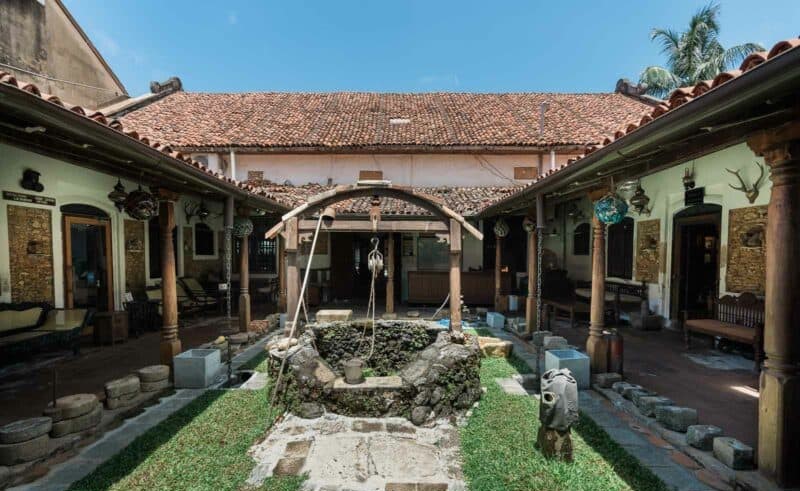
7. Meera Mosque
Location: Rampart Street, Galle Fort
Built: Early 20th century
Overview:
The Meera Mosque is an elegant whitewashed mosque located within Galle Fort, reflecting the diverse cultural and religious influences in Galle. Built in the early 20th century, the mosque is a testament to the vibrant Muslim community that has been a part of Galle’s history for centuries.
What to Do:
- Admire the mosque’s architectural beauty from the outside, as non-Muslims are not permitted to enter.
- Take a walk around the mosque and appreciate the peaceful ambiance of this religious site.
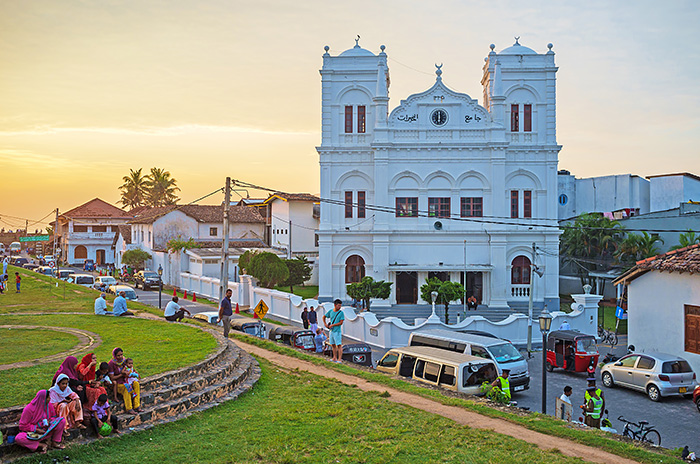
Beyond the Fort: Exploring Galle and Surroundings
1. Unawatuna Beach
Location: 5 km south of Galle
Overview:
Just a short drive from Galle, Unawatuna Beach is a popular spot for swimming, snorkeling, and relaxing by the sea. The beach is famous for its calm waters, making it ideal for families, and there are plenty of beachside cafes and restaurants offering fresh seafood and drinks.
What to Do:
- Relax on the golden sands and take a dip in the warm, clear waters.
- Snorkel at Jungle Beach, a more secluded spot near Unawatuna, or try your hand at diving.

2. Koggala Lake
Location: 15 km east of Galle
Overview:
Koggala Lake is a serene lagoon dotted with small islands, offering a peaceful escape from the bustling streets of Galle. Boat tours are available, allowing visitors to explore the lake’s islands, such as Madol Duwa (famous from Sri Lankan literature) and Kothduwa Temple, a small Buddhist temple on one of the islands.
What to Do:
- Take a boat ride around the lake to explore the islands and enjoy birdwatching.
- Visit the nearby Martin Wickramasinghe Folk Museum for insights into Sri Lankan rural life and culture.
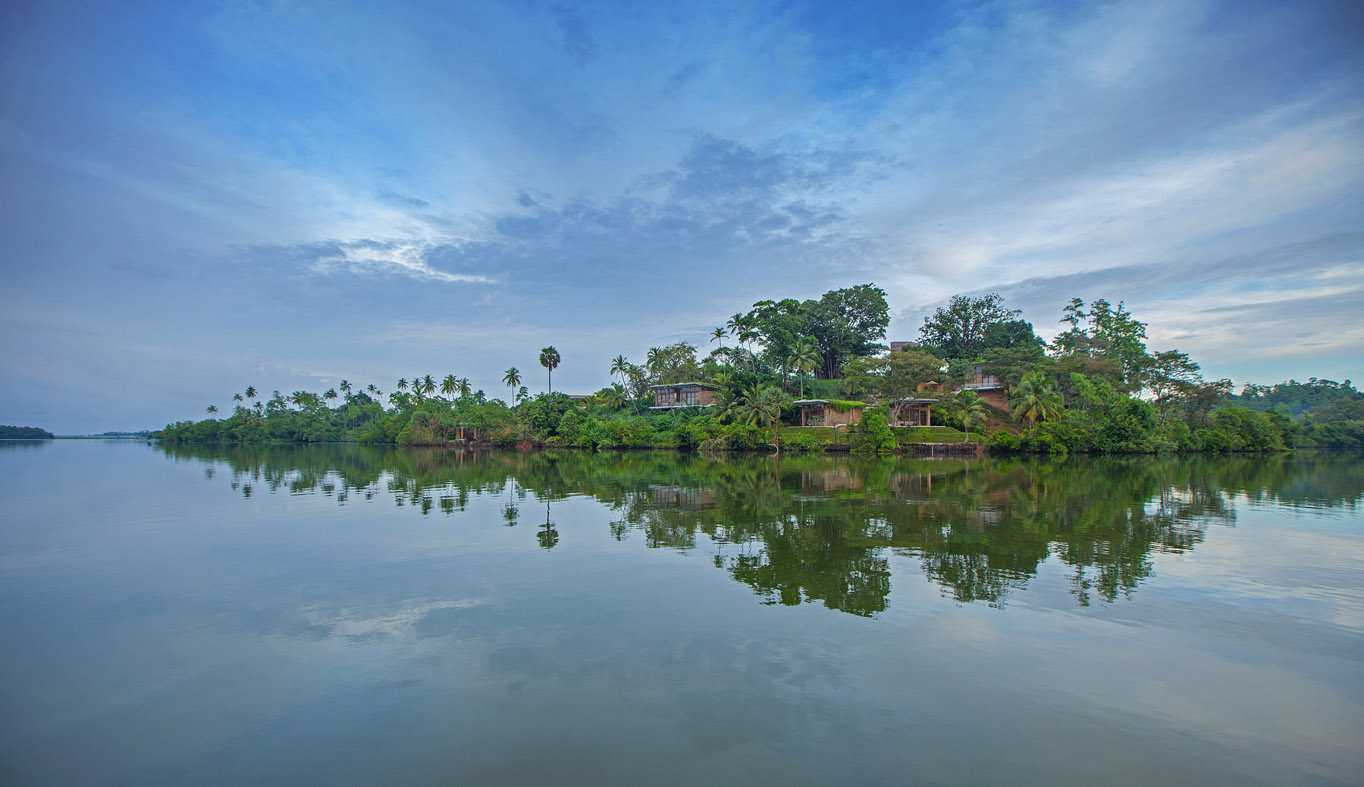
3. Handunugoda Tea Estate
Location: 25 km from Galle
Overview:
If you’re interested in Sri Lanka’s tea heritage, the Handunugoda Tea Estate, also known as the Virgin White Tea Estate, offers an engaging tour of its plantation. This tea estate is famous for producing rare and exclusive white tea, harvested without human touch.
What to Do:
- Take a guided tour of the estate to learn about tea cultivation and production.
- Sample a variety of teas, including the unique Virgin White Tea, while enjoying views of the surrounding hills.

Tips for Exploring Galle
- Wear Comfortable Shoes: Galle Fort is best explored on foot, so wear comfortable shoes as you’ll be walking on cobblestone streets and uneven terrain.
- Stay Overnight: While it’s possible to visit Galle on a day trip, staying overnight allows you to fully enjoy the fort’s ambiance, especially in the evening when the streets are quieter.
- Best Time to Visit: Galle is pleasant to visit year-round, but the best time for exploring is during the dry season from November to April when the weather is sunny and dry.
- Respect Local Customs: When visiting religious sites such as mosques or temples, dress modestly and remove your shoes before entering.
Conclusion
Galle offers a fascinating journey through Sri Lanka’s colonial past, with its blend of Portuguese, Dutch, and British influences reflected in the architecture, culture, and heritage of the city. Whether you’re exploring the ramparts of Galle Fort, relaxing at a nearby beach, or visiting historic landmarks, Galle promises an enriching and immersive experience for travelers. With its unique charm, vibrant history, and stunning coastal views, Galle is a must-visit destination that showcases the rich tapestry of Sri Lanka’s past and present.
Final Tips:
- Local Guides: Consider hiring a local guide for a walking tour of Galle Fort to gain deeper insights into its history and significance.
- Shopping: Galle Fort has many boutique shops selling local handicrafts, antiques, and jewelry—perfect for picking up unique souvenirs.
- Photography: Galle is incredibly photogenic, so don’t forget your camera to capture the beauty of the fort, lighthouse, and surrounding landscapes.
Enjoy your journey through Galle, where history and culture come alive in one of Sri Lanka’s most captivating destinations!
